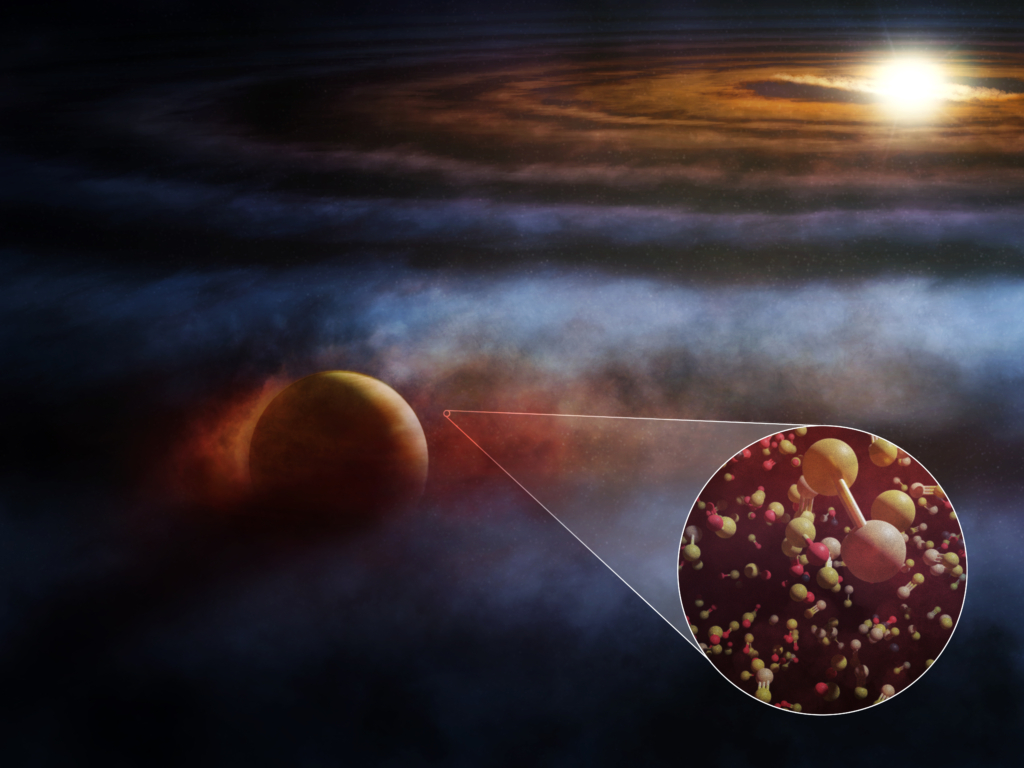ALMA discovers surprising new chemical that may help detect and confirm protoplanets

Using the Atacama Large Millimeter/submillimeter Array (ALMA) in Chile, a team of scientists has made a groundbreaking discovery in the study of protoplanetary disks surrounding young stars. They have found the most compelling chemical evidence to date of the formation of protoplanets, offering astronomers an alternative method for detecting and characterizing these celestial bodies when direct observations or imaging are not feasible.
The team observed HD 169142, a young star situated in the constellation Sagittarius. This star has drawn significant attention from astronomers due to its large circumstellar disk, rich in dust and gas, which is observed nearly face-on. Over the past decade, several potential protoplanet candidates have been identified in this system. Earlier this year, scientists from the University of Liège and Monash University confirmed that one of these candidates, HD 169142 b, is indeed a giant protoplanet resembling Jupiter in size.
"When we looked at HD 169142 and its disk at submillimeter wavelengths, we identified several compelling chemical signatures of this recently-confirmed gas giant protoplanet," said Charles Law, an astronomer at the Center for Astrophysics | Harvard & Smithsonian, and the lead author of the new study.
The researchers believed that the presence of the giant protoplanet HD 169142 b would likely be accompanied by discernible chemical signatures. Their hypothesis proved correct, as they detected carbon monoxide (both 12CO and its isotopologue 13CO) and sulfur monoxide (SO), which had been previously associated with protoplanets in other disks.
Surprisingly, they detected the presence of silicon monosulfide (SiS) for the first time. This discovery was significant because it implied the release of silicates from nearby dust grains, caused by powerful shock waves generated by gas travelling at high velocities. Such shock waves are typically produced by outflows driven by giant protoplanets.
"SiS was a molecule that we had never seen before in a protoplanetary disk, let alone in the vicinity of a giant protoplanet. The detection of SiS emission popped out at us because it means that this protoplanet must be producing powerful shock waves in the surrounding gas," Law said.
This breakthrough in detecting the chemical signatures associated with young protoplanets provides scientists with a new approach to observe and characterize these objects when direct observations or imaging are challenging. The findings pave the way for a deeper understanding of exoplanets and may open new avenues for studying the Universe.
According to the researchers, protoplanets, particularly those still embedded within their circumstellar disks like those in the HD 169142 system, establish a direct link to the known population of exoplanets.










